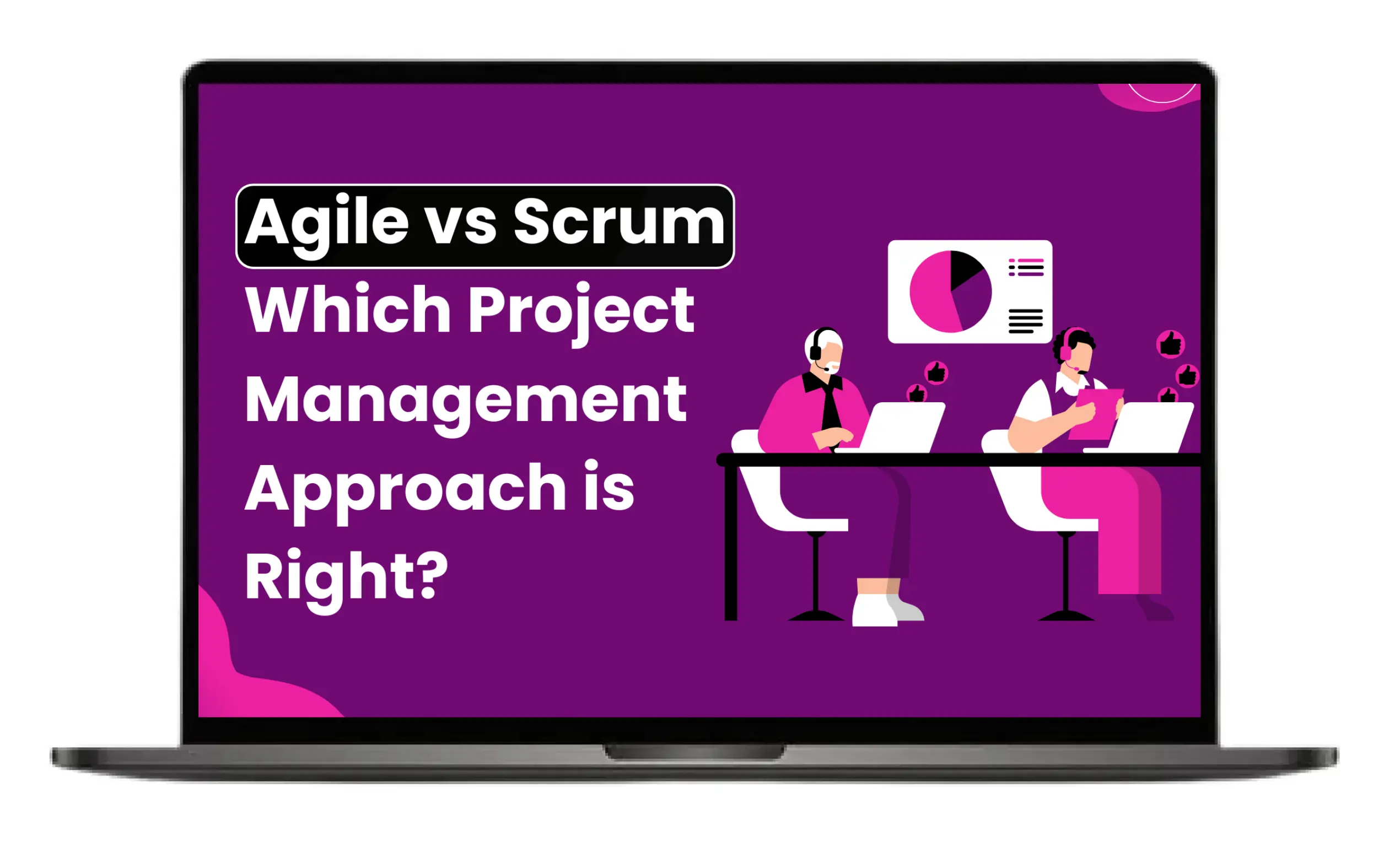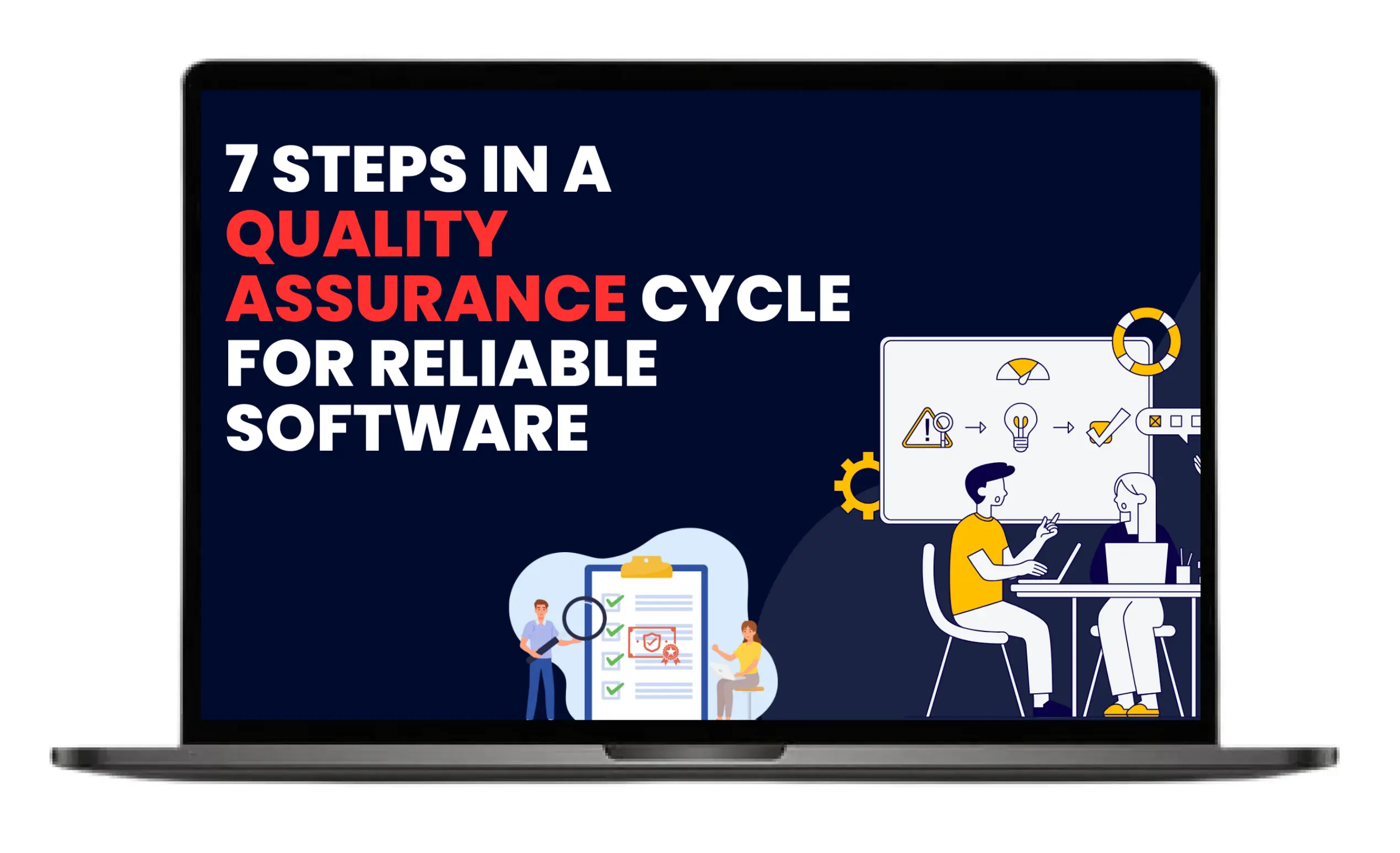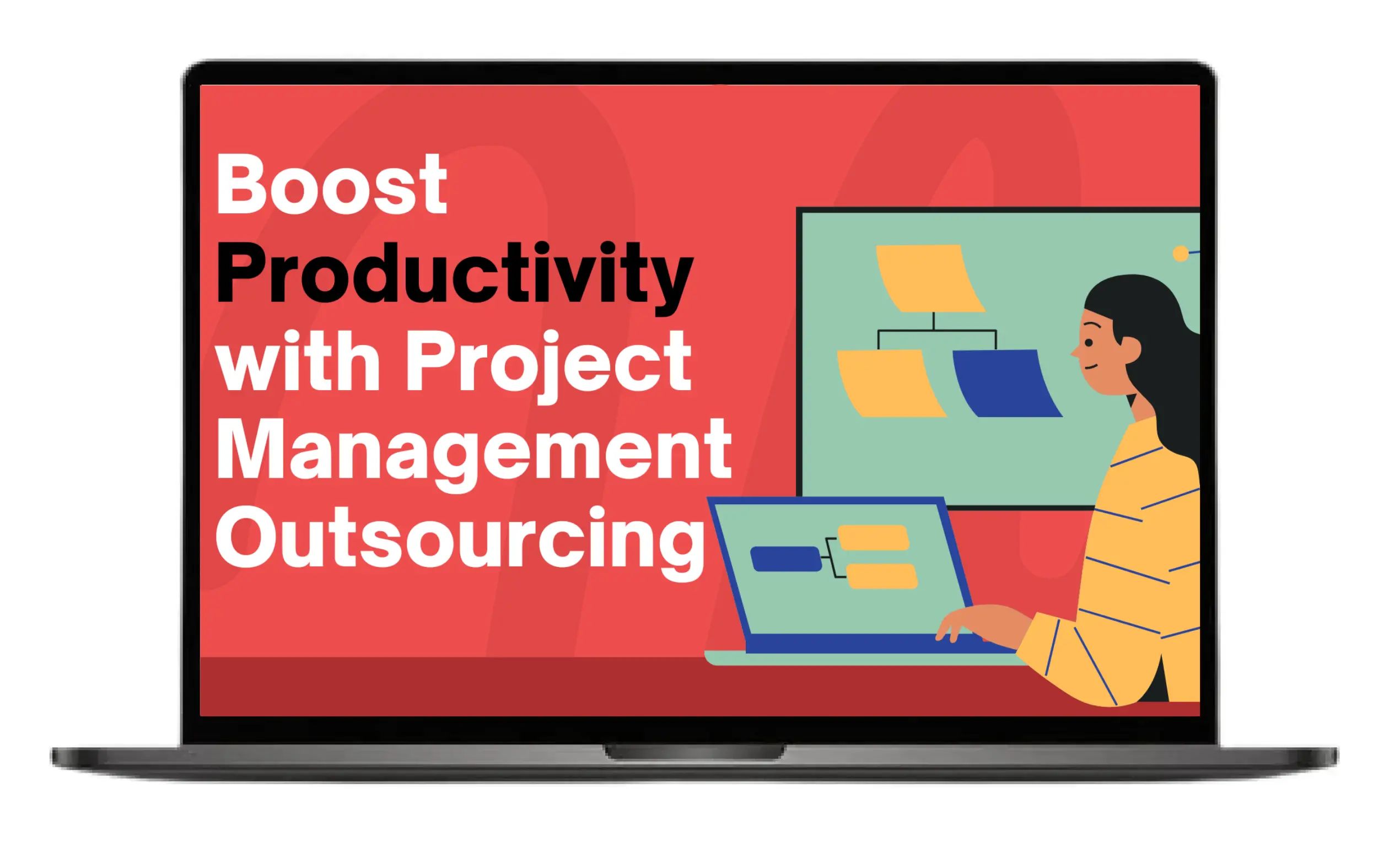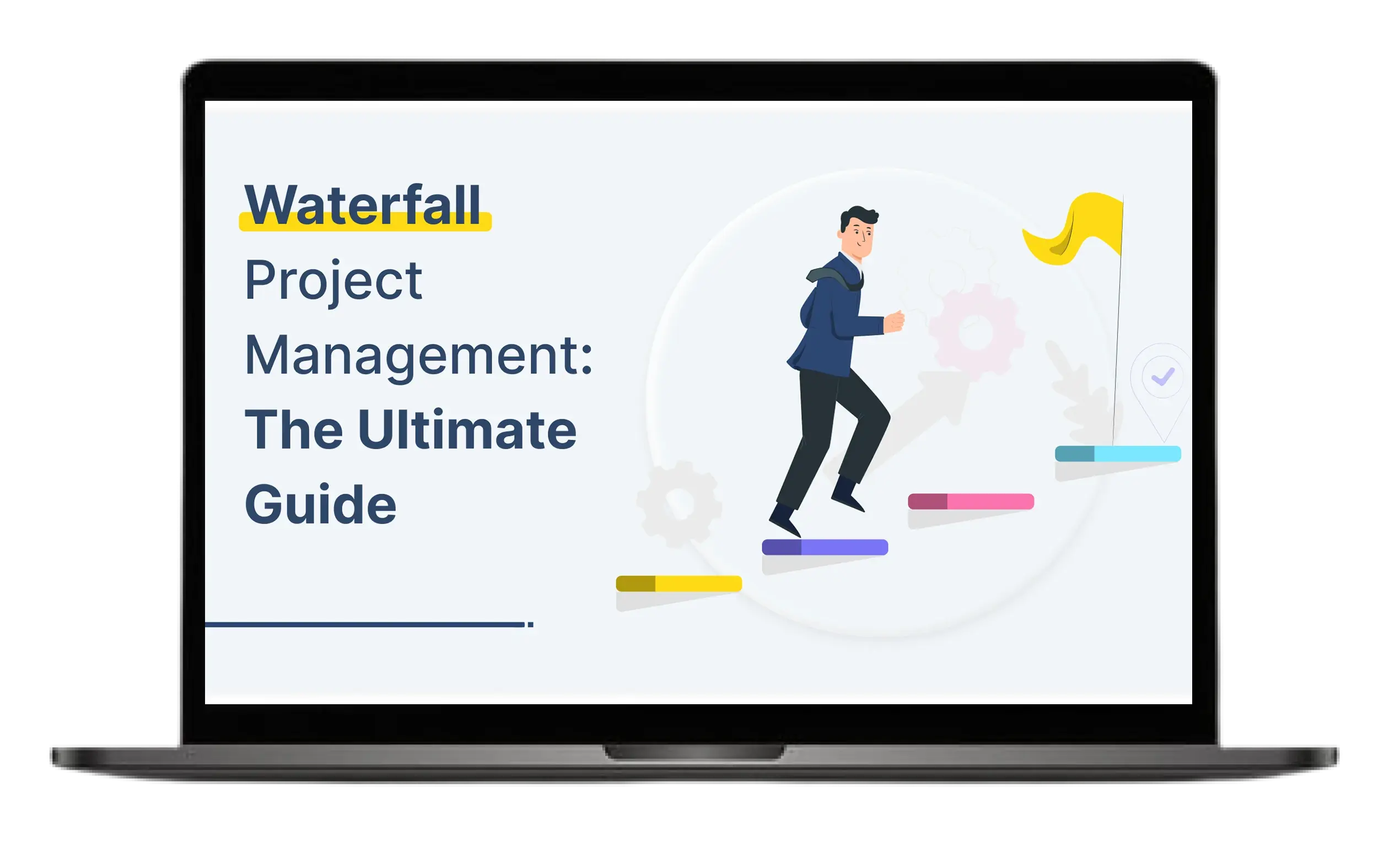
According to PMI, 56% of organizations are still using Waterfall Agile is popular. They have a good reason to still use Waterfall. The phase-based and linear approach of Waterfall is one of the reasons that companies still use it. When you need predictability, compliance, and occurrence, then Waterfall should be your choice. In this blog, we will explain what Waterfall methodology is, why Waterfall is still important in 2025, and how to use it.
What is Waterfall Methodology?
Waterfall project management is a systematic, phase-gate methodology that follows a step-by-step and linear approach to complete a project. There is no overlap between different stages in Waterfall as each project phase starts when you complete the previous.
Principles of Waterfall Project Management
These are the five main principles of the Waterfall methodology:
- Thorough Documentation: Every stage is thoroughly documented to guarantee accountability, clarity, and compliance.
- Minimal Flexibility: The changes during the project can be expensive so it avoids flexibility.
- Sequential Phases: It worlds in a step-by-step manner. Previous stage is the driver of next stage.
- Predictive Planning: Everything including budget, goals, and documentation is predicted at the start.
- Phase Completion Gates: You move to next phase when previous phase is reviewed and completed.
What are the Different Stages of Waterfall Methodology?
There are six main stages of Waterfall Methodology:
Phase 1: Requirements Gathering & Analysis
Thorough requirements documentation is the first step towards any Waterfall project's success. Project managers and analysts interact with all stakeholders during this phase. They establish the project's complete scope, business requirements, and record both functional and non-functional requirements. Important tasks consist of:
- Workshops and interviews with stakeholders
- Creating a Document Outlining Business Requirements (BRD)
- Making an FSD (functional specification document)
- Creating the project charter
- Conducting a technical and financial feasibility study
Phase 2: System Design
After finalizing the requirement, the design of the system architecture becomes the primary focus. In this stage, "what" the system needs to do is changed to "how" it will do it.
High-Level Design (HLD)
- Explains the overall system architecture
- Describe interfaces, technologies, data flow, and modules
- Creates an SDS, or system design specification
Low Level Design
- Gives a detailed design of each module or component's
- Contains interface definitions, pseudo-code, and database schema.
- Creates the development teams' blueprint
Procedure for Design Reviews
- Take stakeholders on design walkthroughs
- Verify against the requirements documentation.
- Address the security, scalability, and performance
System designs with thorough documentation guarantee a scalable and effective expandable implementation process.
Phase 3: Implementation / Coding
Following approval of the designs, the development team starts converting the blueprints into working code. In order to prevent technical debt, this is usually the longest phase and calls for strict coding practices. During this stage, following are main components:
- Configure the tools, libraries, and development environment (IDEs).
- Observe naming conventions and coding standards.
- Put version control systems (like Git) into practice.
- It ensures the documentation is up to date.
You need to test each module separately before moving to the next stage.
Phase 4: Testing and Integration
After the development, the next stage is integration and testing. In this stage, there is a rigorous testing which ensures that everything is according to the initial plan. It also checks that all specifications are according to the requirements. Additionally, in this stage, you fix any bug that is detected. Following are the tests in this stage:
- Individual component unit testing
- Testing for integration (component interaction)
- End-to-end functionality testing of the system
- Regression testing to make sure outdated features continue to function
Phase 5: Implementation
The system is put into production after completing tests. This significant milestone requires thorough preparation, cooperation, and risk reduction. Important tasks in this phase include:
- Stakeholders' approval of the final release
- Using CI/CD tools to carry out the deployment pipeline
- Putting a rollback strategy into action in the event of failure
- Handling system access and change requests
- Notifying users and stakeholders of the go-live
The deployment checklist contains:
- Backup of earlier systems
- The last data transfer
- Sessions of user training
- Setup of the go-live support team
What is the Difference Between Agile and Waterfall?
| Aspect | Waterfall | Agile |
| Planning approach | Predictive upfront | Adaptive iterative |
| Documentation | Extensive | Minimal |
| Flexibility | Low | High |
| Client Involvement | Beginning/end | Throughout |
| Risk Management | Phase-end reviews | Continuous |
Advantages of Waterfall Project Management
1. Organized Predictability & Clarity
Teams benefit from unparalleled clarity right from the start due to the waterfall's phase-based, sequential structure. Each stakeholder is aware of what to anticipate, when to anticipate it, and how to gauge success.
It ensures that there are no changes in the goals of the project during the process. Additionally, it also guarantees that the project is meeting the stakeholder expectations. There are proper checks at every stage to monitor every development. It is suitable for companies and projects that prefer planned tasks.
2. Improved Knowledge Transfer & Documentation
Thorough documentation is necessary in Waterfall. You must document every stage starting from specifying requirements to the end results. This ensures that the data is available for later use. It helps in:
- Fast onboarding of new team members
- Increased cooperation between teams
- Easy transfers between teams
- Enhanced compliance
3. Excellent Timeline & Budget Management
Waterfall enables remarkable control over project resources since all scope, schedules, and expenses are established up front. Stakeholder confidence and financial expectations are easier to manage once the plan is in place because deviations are minimal:
- It decreases budget overruns
- It reduces scope creep
- It is suitable for projects with budgetary constraints
4. Ideal for Regulatory Compliance
Waterfall is suitable for the industries which require strict regulations and rules. It is because every stage has proper rules and structures for compliance, monitoring, and review. It is done through a gate based approval system. This is important for:
- Third parties to edit the documentation
- To ensure that procedures align with industry and governmental standards.
- To guarantee the minimal chance of non-compliance
The type of traceability and consistency is the need of sectors like government, healthcare, and finance.
What are the Disadvantages of Waterfall Management?
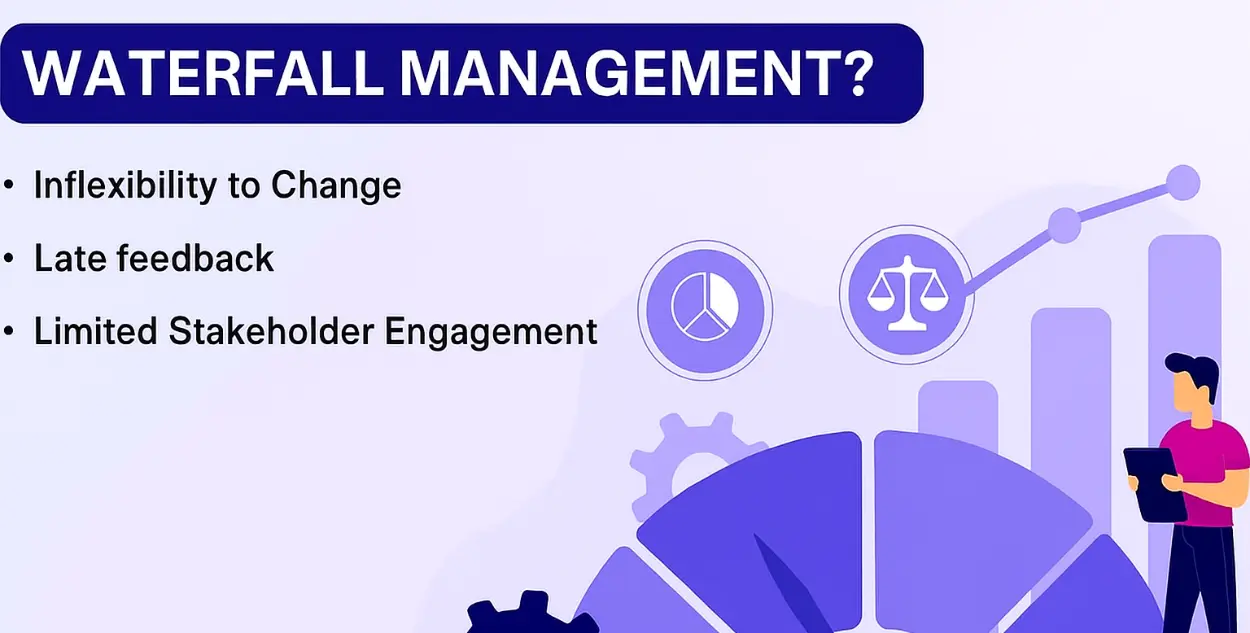
Just like every other approach, Waterfall management also has some disadvantages. Let’s have a look at them:
1. Inflexibility to Change
Waterfall methodology works with a rigid approach. Once it starts, it is difficult to change. If the client suddenly says that he needs few changes in design or wants additional features then it becomes difficult.
2. Late feedback
Let’s say you’re on that road trip and your GPS tells you there’s a massive traffic jam ahead. In waterfall, you have late feedback because testing comes after the development. It means if there are any issues then they will be covered after the testing. This delays the feedback.
3. Limited Stakeholder Engagement
In the Waterfall project, there is very limited interaction of stakeholders with the planners and developers. It can result in misaligned expectations and dissatisfaction about project results.
Conclusion
The Waterfall project management methodology is still relevant in a time when Agile buzzwords and rapid iteration are prevalent. It is particularly pertinent to projects where compliance, structure, and clarity are crucial. In 2025, waterfall is still very important for projects with consistent requirements, a well-defined scope, and a set timeline. Its success depends on careful preparation in advance, thorough documentation, and methodical execution.
FAQs
When is Waterfall better than Agile?
Waterfall is better for projects that have defined scope, fixed requirements, and strict standards for compliance. It is suitable when there is little room for changes in scope and when extensive documentation is necessary.
Can Waterfall and Agile be used together?
Yes, many organizations adopt a hybrid approach. They use Waterfall for high-level planning and Agile for continuous development.
What types of projects are best suited for Waterfall?
Waterfall is best suited for projects with rigid requirements. It is suitable for government projects and software development in sectors like health.








